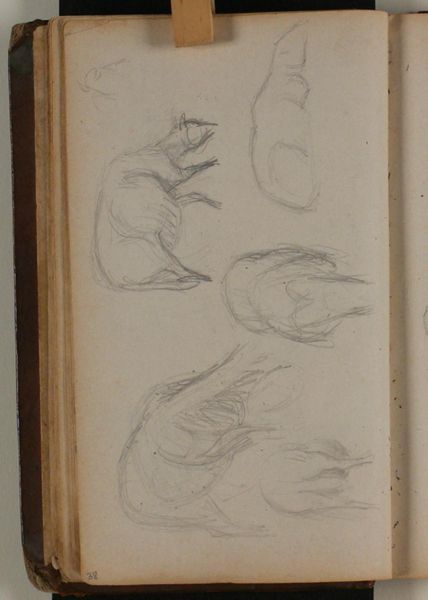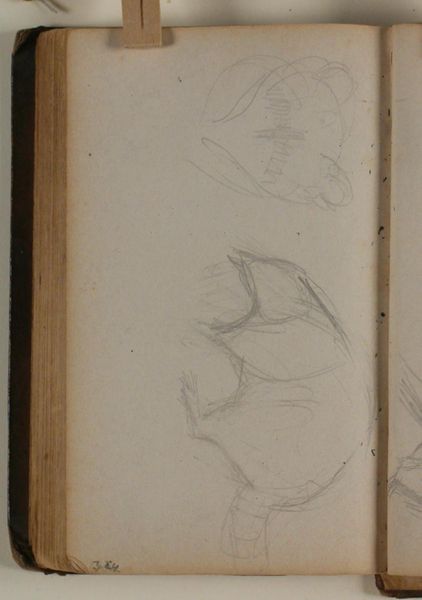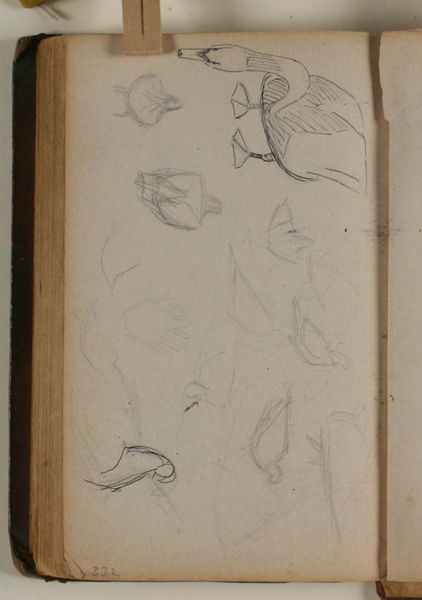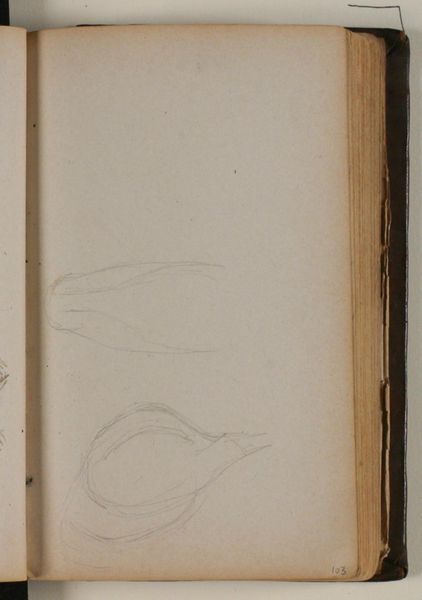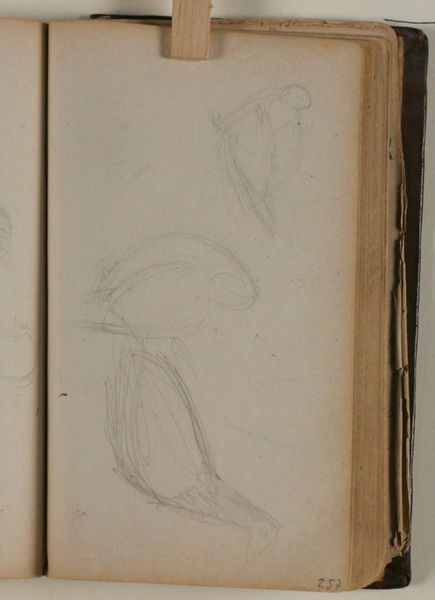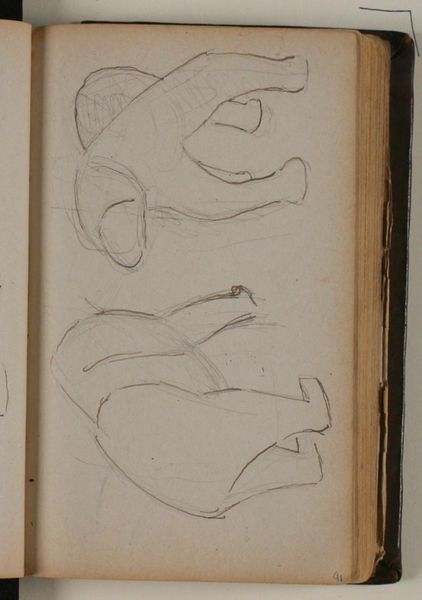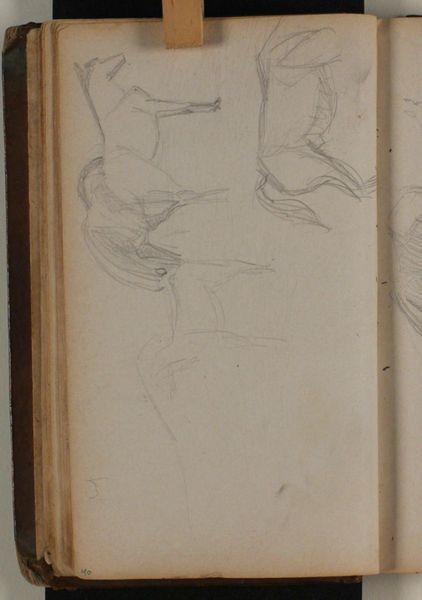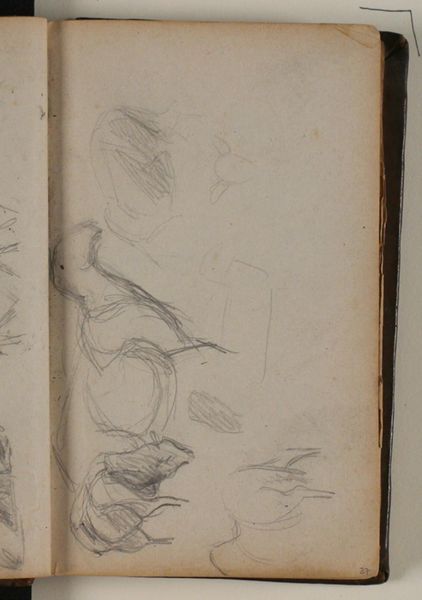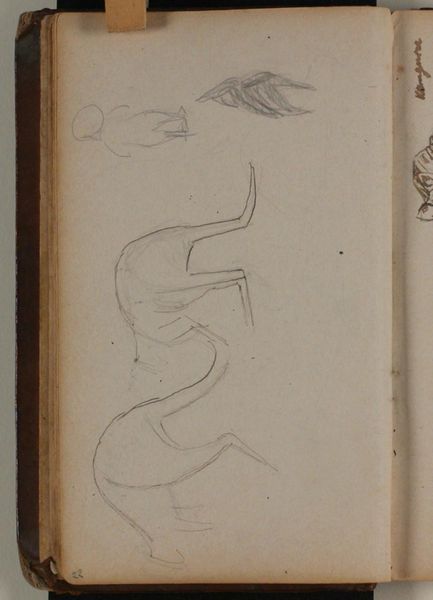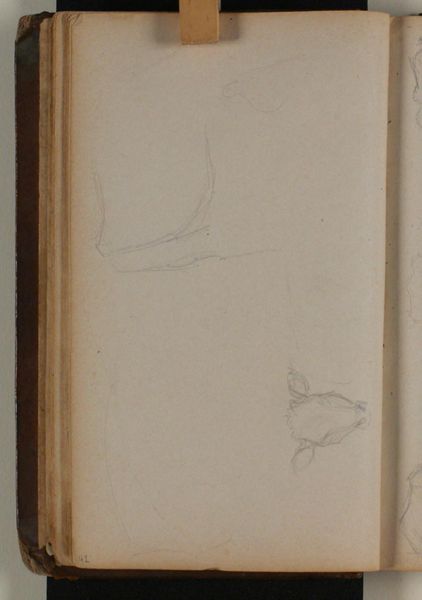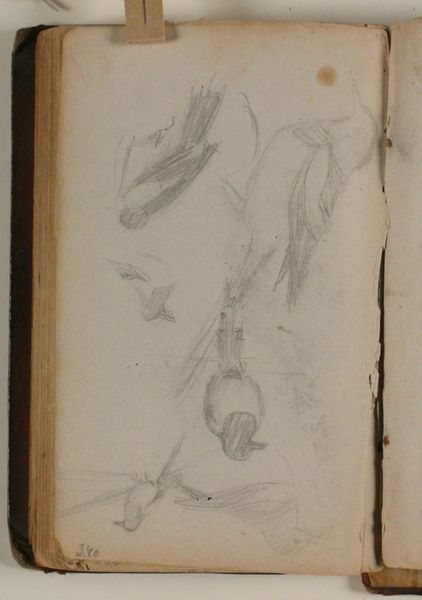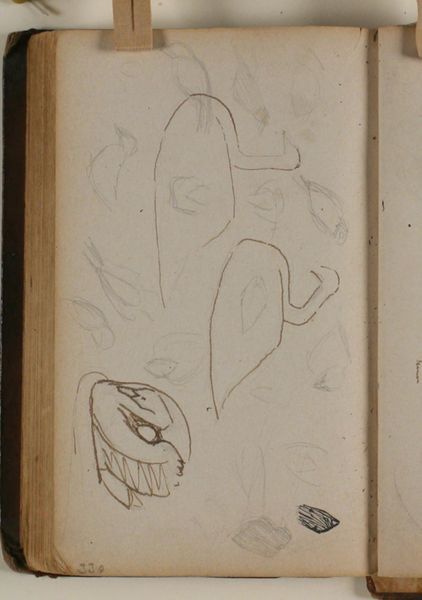
drawing, paper, pencil
#
portrait
#
drawing
#
pencil sketch
#
figuration
#
paper
#
pencil
#
line
#
realism
Curator: This sketchbook page, entitled "Studies of a Racoon" is attributed to Niels Larsen Stevns, likely made between 1864 and 1941, using pencil on paper. Editor: There's a delicate and ephemeral quality that draws me in, it reminds me of sketches by Darwin! The faintness of the lines makes the images feel fragile, almost disappearing before our eyes. Curator: Interesting. Consider how the raccoon, often coded as a 'bandit' in contemporary American iconography, appears here as an object of scientific observation. The absence of precise dating makes pinpointing the artist's intent complicated. Did he plan to make a larger painting, or were they created for educational purposes, like zoological illustrations? Editor: The looseness of the sketches really contributes to its aura of immediacy. One almost feels as though the artist were there, rapidly trying to capture the raccoon’s shifting poses before it disappeared! These fleeting images reveal cultural attitudes toward the natural world and our relationship with animal beings. Curator: True. Throughout much of European history, certain animals get aligned with diverse social or political groups. So, for instance, think about medieval bestiaries that ascribed symbolic meanings based on often imagined qualities of beasts. Understanding what symbolic positionings the raccoon had during that period can broaden what the sketch potentially might express. Editor: Perhaps its symbolism as a trickster also speaks to the artists hand—skittering along the page like it might slip away at any second! It makes me want to grab a pencil and try to capture its fleeting movements too. There’s also the more universal aspect, reminiscent of childhood doodles, representing simpler times of observation and exploration of the immediate world. Curator: These drawings really encapsulate the complex and often ambiguous ways humans have sought to represent non-human animals, and the diverse implications and possibilities involved. Editor: Absolutely. A reminder that images themselves always participate in shaping our understanding of ourselves and our position within the larger environment.
Comments
No comments
Be the first to comment and join the conversation on the ultimate creative platform.
